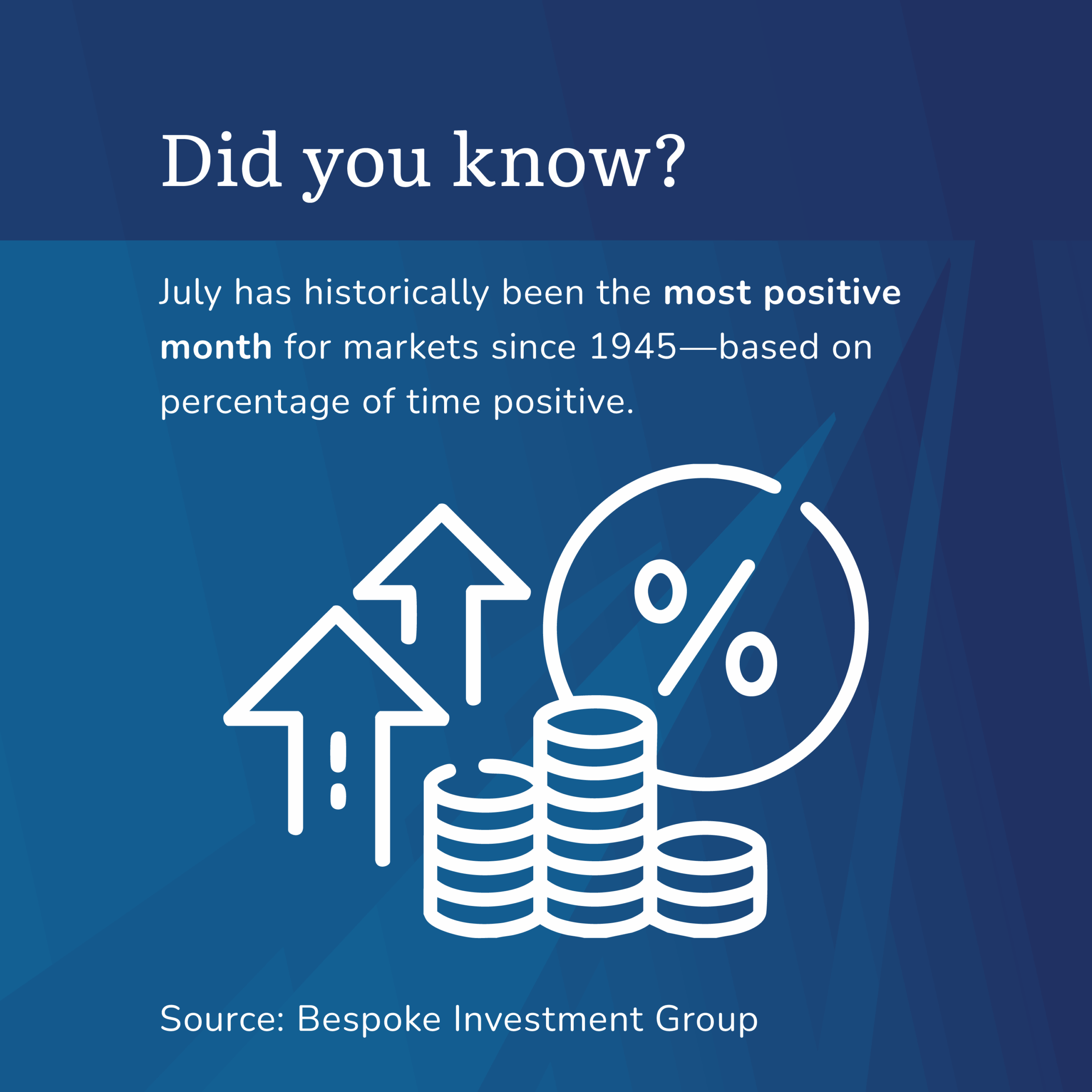3 Market Considerations Heading into 2024
As we wrap up 2023, I want to discuss 3 points that are on my mind—and seemingly on the minds of folks like you: inflation, interest rates, and cash. As usual, the crystal ball is broken, but that won’t stop us from approaching things thoughtfully and with goals in mind.
1. Inflation: the next decade will probably look different than the last decade
Reflecting on recent economic trends, we’ve observed a noteworthy shift in inflation across developed nations. Initially peaking at nearly 8%, headline inflation has now moderated to below 3.5%. This shift represents a significant change in the economic landscape. Various factors contribute to this outlook, including labor market dynamics. For instance, the labor market appears to be rebalancing, hinting at a possible moderation in wage growth. The rate of job creation is gradually slowing across multiple economies. In the U.S., the ratio of job openings to unemployed individuals has decreased, moving from nearly two-to-one a year ago down to approximately 1.3 to one today. This is only slightly higher than the pre-pandemic level of 1.2 to 1. Additionally, recent data on U.S. shelter costs—a significant component of the Consumer Price Index (CPI) —indicates an easing of housing inflation.
It’s essential to approach these observations with an understanding that they do not guarantee future outcomes. Factors such as industrial policies, the ongoing energy transition, and shifts in global supply chains (including the trend towards ‘nearshoring’) could influence commodity prices and limit reductions in the price of goods. Furthermore, consumer and investor expectations regarding inflation could play a role in shaping future inflationary trends.
As we navigate this evolving economic cycle, it’s reasonable to anticipate that the eventual ‘landing point’ for inflation might be higher than what we’ve experienced in recent decades. As with any economic environment, it is wise for investors to explore strategies that put you in a position to outpace inflation over time. The chart below compares the current rate of inflation across different time periods alongside market expectations and JP Morgan’s long-term capital market assumptions (LTCMA).
2. How much cash should be on my balance sheet?
In the realm of financial planning, the role of cash (especially with a 5% yield) demands careful consideration. Historically, cash has shown its strengths in scenarios where central banks exceed expectations in rate hikes and when inflation anticipation is on the rise —a pattern that has developed over the past two years. However, the current economic climate presents a different picture. The conversation has notably shifted from speculating on further rate hikes by the Federal Reserve to a more focused anticipation of rate reductions in the upcoming year.
Let’s talk about rates and expectations. Currently, there’s a 60% probability assigned to a rate cut by March 2024, with a perceived certainty of a cut by May. By the end of 2024, the market anticipates a total reduction of 125 basis points. While these expectations may lean towards optimism, the underlying sentiment is clear: a general trend towards lower interest rates seems to be the consensus.
This shift has implications for cash holdings. With improving earnings growth forecasts and a rebound in risk sentiment, holding significant cash reserves could potentially lead to opportunity costs in the next phase of the economic cycle. Given the forward-looking nature of markets, one can argue that this is why we have seen a rally into year-end. Therefore, it’s crucial that investors reassess the role of cash within their broader, goal-aligned wealth management strategies. Understanding the role cash plays in your long-term objectives is key.
3. Bonds are back?
Recently, heightened bond performance has brought renewed attention to this asset class, especially in the context of U.S. core fixed income, which experienced its most favorable month in four decades this past November.
Bonds have traditionally been valued for their regular coupon payments that provide income for investors. The fundamental reason to own bonds in a broadly diversified portfolio has been two-fold: first, to smooth the ride (reduce fluctuation) and second, to fund the purchase of stocks when they’re down. In economic conditions characterized by slowing growth and declining interest rates, bond prices generally increase, adding to their appeal. However, this perceived security was not without its costs in the previous decade. Prior to the pandemic, a significant portion of global government debt (about 25%) was characterized by negative yields. This meant that investors were effectively paying to lend money —a situation more common in parts of Europe and Japan.
The landscape for bonds has undergone a significant shift recently. Negative yielding debt, once a widespread phenomenon, has drastically diminished and is now primarily confined to Japan. Interestingly, the Bank of Japan hinted this week at a potential departure from its negative interest rate policy in its upcoming meeting. This change is indicative of a broader trend in the global bond market. Currently, nearly 60% of global government debt offers yields over 3%, marking a stark contrast to the previous era of negative yields. This shift presents new opportunities and considerations for investors, who may now view bonds as a more attractive component in a diversified investment portfolio, especially in the context of higher yields and the potential for income generation.
I’ll end with two permanent truths: First, as usual, there is plenty to navigate going into a new year. Second, the key to arriving at your desired outcomes is to remain steadfast and focused on your long-term objectives. It’s important to align investment decisions with these goals. By maintaining a clear vision of your long-term ambitions, you can strategically position your portfolio to capitalize on the opportunities of 2024 and beyond. We live in a timing/selection culture; don’t fall victim. We will always encourage an approach that is goal-focused and planning-driven.
Happy investing!
Marcos
Sign up for our newsletter to receive more financial insights from our experts.
Categories
Recent Insights
-

How Microsoft Teams Can Transform Your RIA Firm’s Efficiency and Compliance
In the competitive world of registered investment advisory (RIA) firms, effective communication and collaboration are key to delivering exceptional client service and maintaining regulatory compliance. Before the pandemic, in-person collaboration was the norm at our firm, but with the transition to a fully remote office, we needed a secure internal communication platform. Today, as many…
-

One Big Beautiful Bill: How Trump’s Tax Overhaul Impacts American Families and Businesses
On July 4th, 2025, President Donald Trump signed into law the “One Big Beautiful Bill Act,” a sweeping piece of legislation that reshapes the American tax landscape and introduces a range of economic, social, and regulatory reforms. Below is an examination of the bill’s key provisions. Key Provisions of the “Big Beautiful Bill” 1. Permanent Extension and Expansion…
-

Talk Your Chart | From Saunas to Stock Surges: Market Recoveries, Margin Resilience & Rate Watch | Episode 69
In Episode 69 of Talk Your Chart, Brett and Marcos unpack the surprising speed of the recent market recovery, debate the timing vs. time-in-market mindset, explore political biases in investing, and analyze how corporate margins and U.S. debt are shaping investor decisions in 2025. Charts available for download here.
-

Smart Money Moves for Teens: The Best Financial Literacy Apps
Why Financial Literacy for Teens Matters Let’s face it—teaching teens about money can be tricky. But thanks to an ever-growing list of financial literacy apps, it’s never been easier (or more engaging) to help kids build healthy money habits. I recently spoke with two clients who’ve been using the Greenlight app to help their children…
-

Rebuilding Financial Confidence After Divorce: Managing Risk & Moving Forward
Divorce is not just an emotional transition—it’s a financial one, too. The process of separating assets, redefining financial goals, and adjusting to a new financial reality can feel overwhelming. But with the right mindset and strategies, you can regain control and build a future that aligns with your new chapter in life. Understanding Financial Risk…
